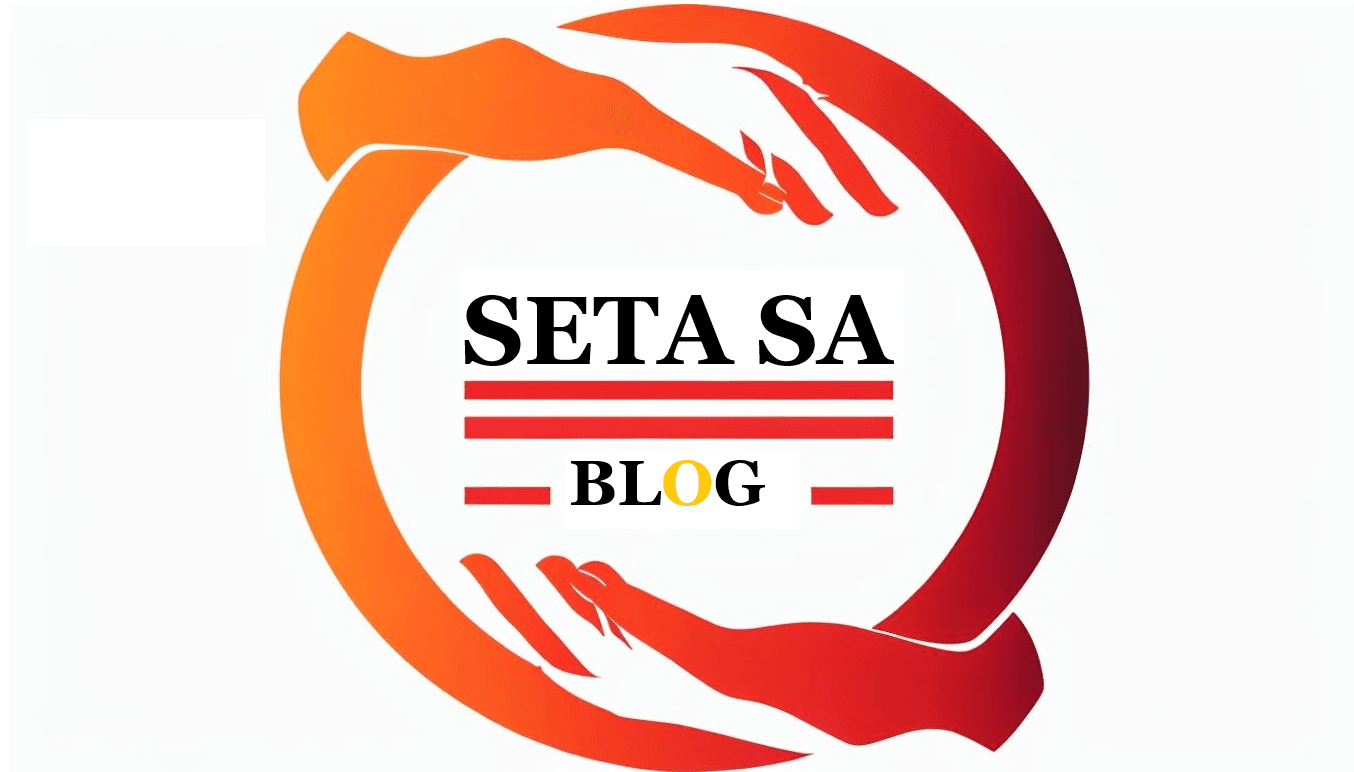SETA Job Application Secrets No One Talks About: Your Ultimate Guide

Dreaming of a fulfilling career contributing to skills development in South Africa? A position within a Sector Education and Training Authority (SETA) could be your ideal path. However, landing a job at a SETA can be competitive, and the application process often has nuances that aren’t widely publicized. This comprehensive guide will unveil the “SETA job application secrets” that can significantly boost your chances of success, moving beyond generic advice to give you a genuine edge.
Understanding the Unique Landscape of SETAs
Before diving into application specifics, it’s crucial to understand what SETAs are and their core mandate. SETAs were established to help implement the National Skills Development Strategy (NSDS) and to increase the skills of people in South Africa across various sectors. Each SETA focuses on a specific economic sector (e.g., BANKSETA for banking, MERSETA for manufacturing, engineering, and related services, HWSETA for health and welfare).
Secret #1: Deep Sectoral Knowledge is Gold. While general skills are important, demonstrating a profound understanding of the specific sector your target SETA serves is paramount. This goes beyond just knowing the SETA’s name. Research the sector’s challenges, growth areas, key stakeholders, and the specific skills gaps the SETA is trying to address. This knowledge should subtly permeate your application.
Decoding SETA Job Adverts: Reading Between the Lines
SETA job advertisements, like many public sector postings, can be dense with information. However, they also contain vital clues about what the hiring committee is truly looking for.
Secret #2: The “Key Performance Areas” (KPAs) are Your Bible. Don’t just skim the responsibilities. The KPAs outline the core deliverables of the role. Your application, particularly your CV and cover letter, must directly address how your skills and experience align with *each* KPA. Use similar language and provide concrete examples.
Secret #3: Pay Attention to “Minimum Requirements” vs. “Preferred/Advantageous.” While meeting minimum requirements is essential, showcasing skills or experiences listed as “preferred” or “advantageous” can set you apart. If you possess these, highlight them prominently. If you’re developing them, mention your progress or willingness to learn.
Tip: Many SETAs are quasi-governmental. This means their recruitment processes often emphasize fairness, transparency, and adherence to policy. Your application needs to be meticulously complete and follow instructions to the letter.
Crafting a SETA-Specific CV and Cover Letter
Generic applications are the quickest way to the rejection pile. Tailoring your documents for each SETA role is non-negotiable.
The Power of a Keyword-Optimized SETA CV
Secret #4: Mirror the Job Description’s Language. SETAs, like many large organizations, may use Applicant Tracking Systems (ATS) to initially screen CVs. These systems scan for keywords found in the job description. Identify these keywords (skills, qualifications, responsibilities) and naturally incorporate them into your CV. Don’t just stuff keywords; provide context and achievements related to them.
Your CV should clearly articulate:
- Relevant Qualifications: Ensure they are clearly listed and match the requirements.
- Sector-Specific Experience: If you’ve worked in the SETA’s sector, highlight this. Even related volunteer work or projects can be relevant.
- Quantifiable Achievements: Instead of saying “Managed projects,” say “Successfully managed 3 skills development projects, impacting 500+ learners and completing them 10% under budget.”
- Understanding of Skills Development Frameworks: Mention familiarity with the NQF, SAQA, QCTO, and relevant legislation if applicable to the role.
The Strategic SETA Cover Letter: Beyond the Formality
Secret #5: Your Cover Letter is Your “Why SETA, Why This Role” Statement. This is your chance to connect the dots for the hiring manager. Don’t just rehash your CV. Use the cover letter to:
- Express genuine interest in the specific SETA and its mission. Reference their latest annual report or strategic plan if possible.
- Clearly articulate how your values align with public service and skills development.
- Showcase your understanding of the sector the SETA serves (referencing Secret #1).
- Highlight 2-3 key achievements from your CV that directly relate to the most critical KPAs of the advertised role.
- Address any potential gaps or explain career transitions proactively.
Warning: Ensure your cover letter is addressed to the correct person or department as specified in the advert. Generic salutations are a red flag.
Navigating the SETA Application Portal and Process
Most SETAs use online application portals. Familiarity with these systems and attention to detail are crucial.
Secret #6: Meticulous Completion is Non-Negotiable. Online forms can be tedious, but every field is there for a reason. Ensure all sections are completed accurately and thoroughly. Double-check for typos or grammatical errors before submitting. Upload documents in the requested format (usually PDF) and ensure file names are clear and professional (e.g., “YourName_CV_SETARole.pdf”).
Secret #7: Certified Documents – Get Them Ready Early. SETA applications often require certified copies of your ID, qualifications, and academic transcripts. Don’t wait until the last minute. Get these certified by a Commissioner of Oaths (e.g., at a police station or post office) well in advance. Ensure the certification is recent (usually within 3-6 months).
The Unspoken Rules of SETA Networking and Research
While formal applications are key, proactive engagement can provide valuable insights.
Secret #8: Leverage LinkedIn and Industry Events (Subtly). Follow your target SETA on LinkedIn. Identify key personnel (but avoid pestering them). Attend webinars or conferences related to skills development or the SETA’s sector. This helps you understand current discussions, priorities, and challenges, which can inform your application and interview answers.
Secret #9: Study SETA Annual Reports and Strategic Plans. These documents are publicly available on SETA websites and are treasure troves of information. They outline the SETA’s performance, strategic objectives, challenges, and future plans. Referencing insights from these documents in your application or interview demonstrates initiative and genuine interest.
For example, if a SETA’s annual report highlights a focus on digital skills development in their sector, and your experience aligns with this, make sure to emphasize it.
Preparing for the SETA Interview: More Than Just Standard Questions
If your application is shortlisted, the interview is your next hurdle. SETA interviews often blend competency-based questions with those assessing your understanding of the skills development landscape and public sector ethos.
Secret #10: Anticipate Questions on Governance and Public Finance. Depending on the role, you might be asked questions related to the Public Finance Management Act (PFMA), good governance, ethics, and stakeholder management. Familiarize yourself with these concepts, especially if applying for managerial or finance-related positions.
Secret #11: The “Situational Judgment” and “Sectoral Insight” Questions. Be prepared for questions like:
- “Describe a major challenge facing the [SETA’s sector] and how skills development can address it.”
- “How would you handle a situation where a key stakeholder disagrees with a SETA policy?”
- “What are your ideas for improving learner placement rates in our sector?”
Use the STAR method (Situation, Task, Action, Result) to structure your answers to competency-based questions, providing concrete examples from your past experience.
Secret #12: Your Questions to Them Matter. At the end of the interview, when asked if you have any questions, don’t say “no.” Prepare thoughtful questions that demonstrate your engagement and interest. Examples:
- “What are the key priorities for this department/team in the next 6-12 months?”
- “How does this role contribute to the SETA’s overall strategic objectives as outlined in your latest plan?”
- “What opportunities are there for professional development within the SETA?”
Post-Application and Interview: The Waiting Game and Follow-Up
The period after submission or an interview can be nerve-wracking.
Secret #13: Professional Patience and Polite Follow-Up. Public sector recruitment can sometimes take longer than in the private sector due to internal processes and approvals. If a timeframe was given and has passed, a polite, brief follow-up email to the HR contact is acceptable. Reiterate your interest in the role.
Secret #14: Learnerships and Internships as Stepping Stones. Don’t overlook SETA learnerships, internships, or even volunteer opportunities. These can be invaluable entry points, providing you with direct experience, networking opportunities, and a deeper understanding of how SETAs operate. Many permanent SETA employees started their journey through such programs.
The Overarching Secret: Passion for Skills Development
Secret #15: Genuine Passion Shines Through. Ultimately, SETAs are looking for individuals who are genuinely passionate about skills development and making a difference in South Africa. This isn’t just a job; it’s a commitment to national development. If this resonates with you, let that passion and commitment be evident in every interaction, from your written application to your interview responses. Explain *why* you want to work in this field and for that specific SETA. Your authentic enthusiasm can be a powerful differentiator.
Applying for a SETA job requires diligence, strategic thinking, and a genuine understanding of their mission. By incorporating these “secrets” into your approach, you move beyond being just another applicant to becoming a standout candidate who truly understands the nuances of the SETA environment. Good luck with your application!





